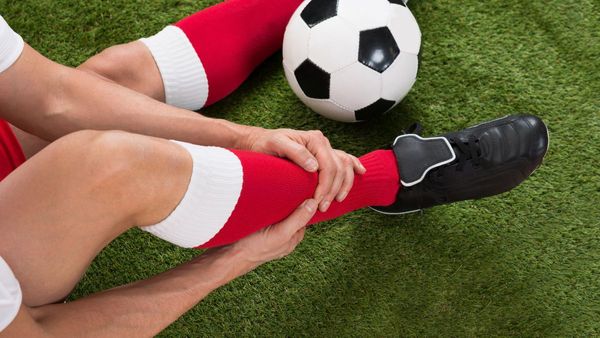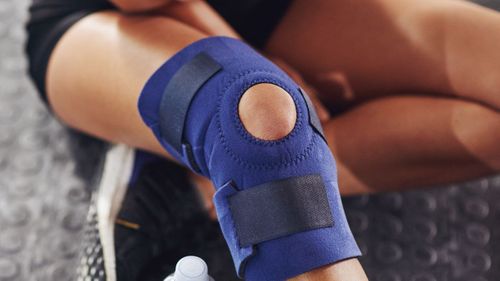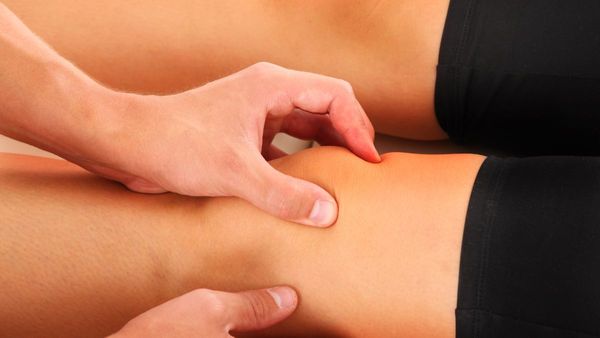Massage therapy supports every phase of injury recovery from easing pain and inflammation to restoring mobility rebuilding strength and helping you avoid future setbacks. This blog explains the five recovery stages how massage fits into each stage and when working with a certified massage therapist can help you get better results.

Five Recovery Stages Supported by Massage Therapy
Denise Leslie
Massage therapy offers more than relaxation; it's essential for injury recovery and pain management. At Medical Sports Massage in Sandy Springs, GA, we provide solutions that promote healing and mobility while preventing future injuries. Recovery isn't linear but a holistic journey needing various approaches.
Integrating massage into your plan helps address physical ailments and supports mental well-being. In this article on 'Five Recovery Stages Supported by Massage Therapy,' we'll explore its role in easing pain, improving mobility post-surgery, aiding muscle injury recovery through sports massage benefits, and using deep tissue techniques for rehabilitation.
Introduction: The Role of Massage Therapy in Injury Recovery
Massage therapy is vital to injury recovery by enhancing blood circulation and reducing inflammation. This improved circulation delivers essential oxygen and nutrients to the injured area, accelerating healing. Techniques like deep tissue massage break down scar tissue while increasing flexibility, helping prevent future injuries.
Post-surgery patients benefit from reduced pain and swelling through targeted massages that support lymphatic drainage. Athletes find faster recovery with sports-specific techniques tailored for muscle repair, which improve overall mobility. Massage therapy for injury recovery isn't just about physical relief.
It also boosts mental well-being during tough times of rehabilitation.
1. Rest and Protect: Massage Therapy for Pain Relief and Inflammation Reduction
Massage therapy helps reduce pain and inflammation by promoting blood flow to affected areas. This influx of fresh oxygenated blood speeds up the healing process, helping tissues repair quicker. Therapists target specific muscles and soft tissue around joints, easing stress on these structures.
Studies show that deep tissue massage lowers cortisol levels while boosting serotonin and dopamine—natural compounds your body uses for mood regulation—which also aids in reducing pain perception. By loosening tight muscle fibers, massages enhance lymphatic drainage, which removes toxins from inflamed regions, effectively diminishing swelling."
Consistent sessions can make a significant difference relatively quickly without invasive methods for recovery post-surgery or an injury like tendonitis or bursitis. Research highlights the significant role of massage in enhancing flexibility and alleviating symptoms of delayed-onset muscle soreness (DOMS), even though its impact on direct performance measures like strength or endurance is less clear. According to a systematic review and meta-analysis conducted by Holly Louisa Davis and colleagues, these benefits underscore the supportive aspects of massage in recovery processes.
I’ve seen firsthand how applying the Grason Method aids seasoned marathon hopefuls reach their dream races. It also rejuvenates older athletes by allowing them to outpace younger competitors again.

2. Mobility and Movement: Enhancing Flexibility with Massage Therapy
Regular massage therapy can significantly boost flexibility by targeting muscles and connective tissues. Techniques like deep tissue and sports massage help elongate muscle fibers, improving range of motion. Consistent mechanical pressure from massages also promotes blood flow, reducing joint stiffness.
Moreover, it removes inflammatory cytokines released during injury recovery, which speeds up cellular regeneration. Over two weeks, this has been shown to double muscle repair rates while minimizing scar tissue formation. Enhanced movement reduces pain, so staying active also becomes easier after an injury or surgery.
Research by scientists at the Wyss Institute and Harvard John A. Paulson School of Engineering and Applied Sciences supports these findings. Using a robotic system to apply precise forces to injured mouse muscles, their study demonstrated that such mechanical loading rapidly clears inflammatory cells and enhances muscle regeneration. This parallels our use of targeted massage techniques, which similarly work to reduce inflammation and promote faster healing in human muscles.
3. Strength and Stamina: Supporting Muscle Recovery through MassageTechniques
Massage techniques can play an important role in supporting muscle recovery by enhancing strength and stamina. Techniques like deep tissue massage target deeper layers of muscle fibers, helping to break down adhesions that cause stiffness and limit the range of motion. This allows for better blood flow, which speeds up the delivery of nutrients needed for repair, reducing delayed-onset muscle soreness (DOMS).
In addition, massages help flush out metabolic waste products accumulated during intense exercise, alleviating fatigue more effectively than passive rest alone. Incorporating regular massage into an athlete's routine facilitates a quicker return to peak performance levels while minimizing the risk of future injuries through enhanced flexibility.
4. Reconnecting to Coordination: Improving Kinesthesia with Massage Therapy
Reconnecting to coordination after an injury involves improving kinesthesia or body awareness. Massage therapy aids this by stimulating nerve receptors in muscles and skin, enhancing the brain's ability to recognize joint position and movement. This is crucial for athletes recovering from injuries as it helps reestablish muscle memory and coordination lost due to inactivity.
Over time, consistent massages can improve balance and prevent future injuries by making movements more fluid and precise. In addition, massage reduces stress-induced hormonal levels like cortisol, which interfere with healing processes, thus supporting quicker recovery through enhanced relaxation effects on both mind-body axis, which is essential during the rehabilitation phase and aids better sleep patterns, too!

5. Rebuilding Sport-Specific Technical Movements: Optimizing Performance with Sports Massage
Rebuilding sport-specific technical movements with sports massage involves focused muscle work. This helps optimize performance by improving circulation and relaxation, reducing stiffness and tension in targeted areas. Deep tissue techniques break up painful adhesions around injury sites, enhancing flexibility and range of motion crucial for precise movements.
Enhanced blood flow supports quicker recovery from soreness or fatigue during training sessions. Regular massages keep muscles pliable to prevent injuries from repetitive motions in sports. This helps athletes perform complex tasks efficiently and minimizes downtime due to re-injury risks.
Conclusion: The Comprehensive Benefits of Massage Therapy in Injury Rehabilitation
Massage therapy is effective for muscle injury recovery by enhancing circulation, which improves the delivery of nutrients and oxygen essential for tissue repair. Sports massage, in particular, boosts flexibility, which can lead to better performance and safer exercise routines.
By speeding up the elimination of metabolic waste like lactic acid, massage therapy effectively shortens recovery times. https://www.livelifepainfree.com/ge helps mitigate symptoms of over-training syndrome by relaxing muscles and acting as a soothing agent on the nervous system. Therapeutic stretching during massages prevents the formation of adhesions and promotes a chemical balance that is crucial for optimal tissue health, especially after surgery.
These benefits collectively establish massage as an integral component of successful injury rehabilitation strategies.
At Medical Sports Massage in Sandy Springs, GA, our trained therapists focus on five primary stages of recovery where massage therapy can be especially beneficial. Initially, it eases inflammation by applying gentle pressure, which also helps to enhance blood flow. This increase in circulation supports muscle repair.
Regular massage sessions are essential for alleviating pain; they relax tense muscles and trigger the release of endorphins. By gradually loosening tight areas, massage also improves flexibility. Lastly, the soothing nature of massage techniques fosters mental relaxation, which plays a crucial role in overall well-being and accelerates the healing process.
About The Author
Denise Leslie is a powerhouse mother, entrepreneur, and advocate for pain-free living. With a passion for healing and promoting health and wellness, As a dedicated therapist, Denise is committed to empowering others on their journey to optimal well-being. She understands the importance of community support and never stops serving those around her.

